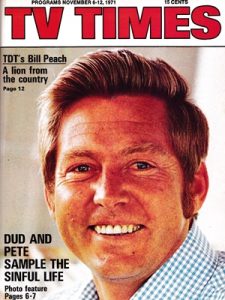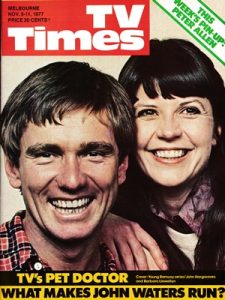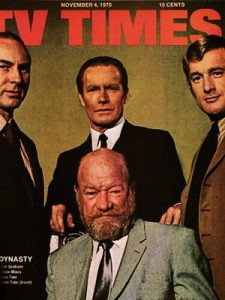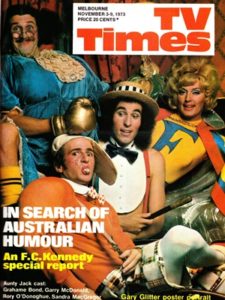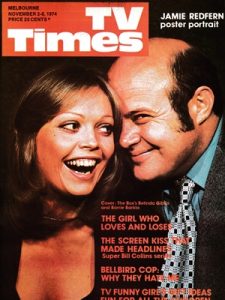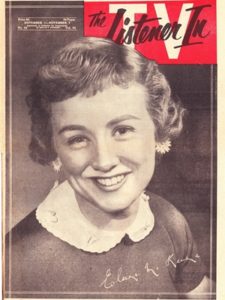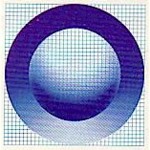
SBS is the youngest of Australia’s five free-to-air networks.
Announced in the late 1970s as a spin off from the multilingual radio stations (2EA Sydney and 3EA Melbourne) that the Government had launched in 1975, the new television channel would provide programs aimed specifically at the growing number of Australian citizens for which English is not their native language, and also would reflect the various aspects of Australia’s now multicultural society.
Operated by the Special Broadcasting Service, the new television service made its first appearance on air in April 1979 with a test transmission broadcasting a compilation of special multicultural programs on ABC stations ABN2 Sydney and ABV2 Melbourne on Sunday mornings.
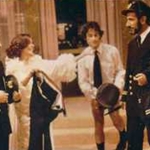
On Friday 24 October 1980, the new Channel 0/28 made its official debut at 6.30pm in Sydney and Melbourne. Bruce Gyngell, who appeared on the opening night of Australia’s first TV station TCN9 in 1956, was the first to appear on Channel 0/28. After Gyngell’s opening introduction and the official opening from Prime Minister Malcolm Fraser came 0/28’s first program, a documentary by Peter Luck called Who Are We?, and later in the evening an Australian adaptation of the Greek comedy Three Sea Wolves.
Channel 0/28’s arrival also marked the introduction of UHF television in Australia by broadcasting via UHF Channel 28 in Sydney and Melbourne, in simulcast with VHF transmissions on the channel 0 frequency. The station faced an uphill battle in its early years to gain viewers, with the UHF band being new to Australian viewers, and also problems faced by the use of the channel 0 frequency particularly in Sydney where many TV antennas were not compatible with the 0 frequency.
By the end of 1980, Channel 0/28 had launched its widely acclaimed World News with newsreader George Donikian, and its own variety program Cabaret.
In 1982, community television made its first appearance with a series of test programs screened on 0/28 from community TV group Open Channel. By the late 1980s a weekly program, Windows, would provide a glimpse at television produced by community television groups and would be the predecessor to full-time community TV channels that popped up in the mid-1990s.
In October 1983, Channel 0/28 made its first move to extend beyond Sydney and Melbourne with commencement of transmission in Canberra, Goulburn and Cooma — all on the UHF band. At the same time Channel 0/28 became Network 0/28 and unveiled a new signature theme ‘Bringing The World Back Home’.
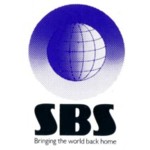
On 18 February 1985, Network 0/28 became SBS and began its first regular daytime transmissions.
SBS expanded to Brisbane, Adelaide, Newcastle, Wollongong and the Gold Coast on Sunday 30 June 1985. On 5 January 1986, SBS ceased its VHF transmissions on Channel 0 in Sydney and Melbourne, making it Australia’s first sole UHF network. The network expanded to Perth and Hobart on 16 March 1986, and Darwin in 1994.
The future of SBS was cast into doubt later in 1986 when the Federal Government announced plans to pass legislation that would merge the two national broadcasters ABC and SBS, effective 1 January 1987. The proposal was protested by SBS and the various multicultural communities and by 1987 Prime Minister Bob Hawke announced the merger would now not proceed.
In 1990, SBS is given Government approval to seek sponsorship funds for its telecast of the FIFA World Cup. This would be a predecessor to SBS carrying limited amounts of paid advertising (up to five minutes per hour) on both television and radio services from 1991.
Programming highlights from the first twenty years have included the 1982 award-winning mini-series Women Of The Sun; the American mini-series The Civil War; music programs Rock Around The World, The Noise, MC Tee Vee and Alchemy; drama series including The Girl From Steel City, City West, House Gang and Going Home; current affairs programs Dateline; Aboriginal affairs program ICAM; the long-running Movie Show; the American animated cult favourites South Park and Happy Tree Friends; the annual Eurovision Song Contest; and of course the network’s proud soccer coverage which brought the game to Australian prime time television for the first time — in particular the FIFA World Cup telecasts which have achieved the network’s highest ratings ever.
Digital television arrived on 1 January 2001, and SBS began simulcasting its analogue service in digital in Melbourne, Sydney, Brisbane, Adelaide and Perth. By mid-2002, SBS launched its first digital-only channel, the SBS World News Channel, dedicated to continuous news broadcasts from around the world in languages other than English. By June 2006, SBS had expanded digital television services to 161 transmitter sites across metropolitan and regional Australia.
In 2004, SBS entered into an arrangement to share Olympic Games telecast rights with the Seven Network, providing up to 15 hours a day of Olympic events coverage. SBS also packaged daily highlights of Olympics coverage for the Asia-Pacific Broadcasting Union.
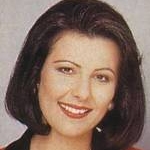
A controversial change in the network’s on-air presentation followed in 2006, with commercial breaks now being inserted within programs rather than the previous method of only airing commercial breaks in between programs. This change was met with criticism from supporters of SBS and also some of its own staff, not least being the station’s veteran news presenter Mary Kostakidis.
The nightly news bulletin, World News Australia, was expanded from a half-hour to one-hour format on 22 January 2007 with former Seven Network presenter Stan Grant joining Kostakidis at the news desk, but by the end of the year both news presenters had departed the network.
The following year saw SBS embark on a local versions of popular UK programs Top Gear and Who Do You Think You Are?, another joint telecast of the Olympic Games with the Seven Network, and a new logo accompanying the station’s new promotional tagline ‘Six Billion Stories and counting’.
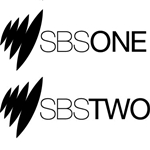
On 1 June 2009, SBS replaced its digital World News Channel with a new channel — SBS2 — featuring foreign-language news bulletins during the day and a mix of time-shifted and exclusive program content in the evenings. The channel was re-launched again in 2013 with a focus on younger demographics.
SBS MILESTONES
1979 Test transmission via ABC
1980 Channel 0/28 begins in Sydney and Melbourne
1980 First World News bulletin
1982 First drama series Women Of The Sun
1983 First telecast Eurovision Song Contest
1983 Channel 0/28 becomes Network 0/28
1983 Expansion to Canberra
1984 Dateline begins
1985 Network 0/28 becomes SBS
1985 First regular daytime transmission
1985 Expansion to Brisbane and Adelaide
1986 Expansion to Perth and Hobart
1986 FIFA World Cup in partnership with ABC
1986 The Movie Show (1986-2006)
1988 Australia Live telecast in partnership with Nine and ABC
1990 FIFA World Cup telecast from Italy
1991 First commercial appears
1993 New SBS logo launched
1993 Worldwatch begins
1994 Expansion to Darwin
1994 FIFA World Cup telecast from USA
1997 US animated series South Park begins
1998 FIFA World Cup telecast from France
2001 Digital television launches
2002 World News Channel launches
2002 FIFA World Cup from Korea/Japan in partnership with Nine
2004 Olympic Games from Athens in partnership with Seven
2005 Ashes cricket series telecast from United Kingdom
2006 FIFA World Cup telecast from Germany
2007 World News Australia extends to one-hour format
2008 Olympic Games from Beijing in partnership with Seven
2009 SBS2 replaces World News Channel
2010 FIFA World Cup from South Africa
2012 NITV merged into SBS; commences free-to-air broadcast
2013 SBS2 re-launched with youth-focused schedule
2014 FIFA World Cup from Brazil
2015 Food Network launches on SBS3
2016 SBS2 relaunches as SBS Viceland
2018 FIFA World Cup from Russia
2019 World Movies channel begins
2022 World Watch channel begins
2022 FIFA World Cup from Qatar
original text © TelevisionAU
16 October 2000
revised 5 August 2004
revised 12 April 2006
revised 18 August 2008
revised 24 August 2007
revised 28 May 2009
revised 24 September 2013
